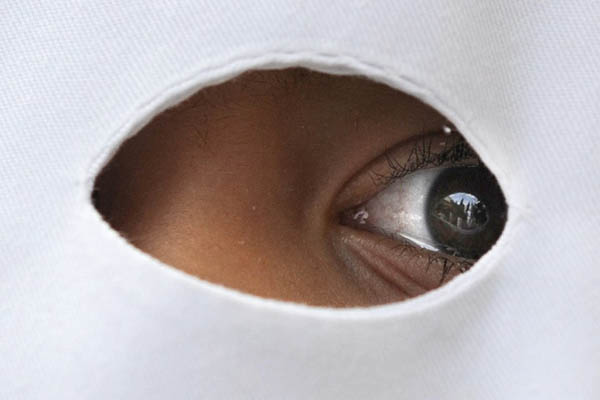
File Photo. Cristina Quicler—AFP
Researchers say changing attitudes through entertainment could contribute to abandoning of brutal practice.
Researchers frustrated by the deep communication gap between people trying to end female genital mutilation and the societies that practice it proposed a novel solution on Wednesday: film.
An unusual experiment in Sudan showed it was possible to alter people’s attitudes with a mere 27 minutes of anti-genital mutilation messaging sneaked into a 90-minute movie, a team from Switzerland and Sudan wrote in the journal Nature. “The movies significantly improved attitudes towards girls who remain uncut,” they reported after two experiments involving thousands of participants.
The team said the findings suggested that “changing attitudes through entertainment could contribute to the abandoning of cutting.”
Female genital mutilation is a practice common in parts of Africa, the Middle East and Asia, in which a young girl’s clitoris and labia are partially or totally removed. The underlying belief is that this will reduce libido and keep a woman chaste.
The procedure—often performed under unsterile conditions—can lead to severe bleeding and urination problems, cysts, infections, painful sex and childbirth complications.
According to the World Health Organization (WHO), more than 200 million girls and women alive today have been cut. Over two million join their ranks each year.
The WHO has categorized female genital mutilation a violation of human rights. But efforts to convince traditional societies to give up the practice have run into difficulty mainly due to “incompatible attitudes” and “cultural conflicts,” said the study team.
Campaigns against genital mutilation are often perceived as attempts by outsiders to impose their own values on communities whose history and culture they know little about. Some groups which practice the procedure believe they are doing it for the child’s own good, as it is perceived to boost a girl’s marriage prospects.
According to the study’s authors, campaigners often err by not taking into account that there might be divergent views even within communities where genital mutilation is practiced.
In their experiment, the researchers sought to tap into such differences to stimulate debate. They created several versions of a movie in which members of a fictional, extended family disagree about whether its girls should be cut or not. The message was not the main plot, and was designed not to come across as judgmental or preachy.
It portrays, instead, how hard the decision can be for parents who want the best for their daughters in a society where the practice is an accepted part of growing up. The message comprised less than a third of the running time of the movies, which were screened at community buildings such as schools.
Tested afterwards, people who saw the films showed “large, robust and significant increases in positive attitudes about uncut girls,” the researchers concluded, when compared to people who saw a version of the movie featuring the same characters but without the female genital mutilation sub-plot.
Nicholas Christakis from Yale University’s Department of Medicine said it was impossible to know if the shift was permanent. The participants were tested at only one point in time—directly after the screening or a week later. “In addition, we do not know whether improved attitudes led to any change in behavior,” he wrote in a comment also carried by Nature.
